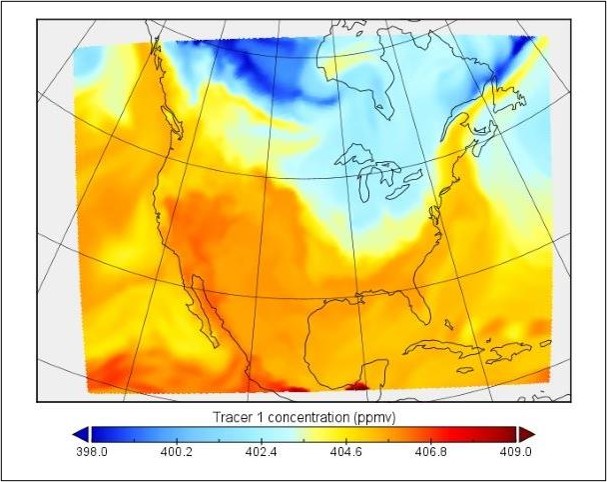The ORNL DAAC recently released a new ACT-America dataset developed by Feng, S., et al. (2021):
ACT-America: WRF-Chem Baseline Simulations for North America, 2016-2019
This dataset includes hourly output from the WRF-Chem simulation model for North America at a resolution of 27 km for 2016-06-29 through 2019-07-31. WRF-Chem is the Weather Research and Forecasting (WRF) model coupled with Chemistry. The output provides baseline conditions for comparison to data from ACT-America airborne campaigns conducted to study atmospheric CO2 and CH4 from 2016 to 2019. The WRF-Chem (v. 3.6.1) model was driven by meteorological conditions and sea-surface temperatures. The output includes 50 vertical layers up to atmospheric pressure of 50 hPa with 20 levels in the lowest 1 km. It provides information for understanding the fluxes and atmospheric transport of carbon dioxide (CO2), methane (CH4), and ethane (C2H6).
The ACT-America mission spanned five years and included field campaigns covering all four seasons over central and eastern regions of the United States. ACT-America's objectives were to study the transport and fluxes of atmospheric CO2 and CH4. Two instrumented aircraft platforms, the NASA Langley Beechcraft B-200 King Air and the NASA Wallops Flight Facility's C-130 Hercules, were used to collect high-quality in situ measurements across a variety of continental surfaces and atmospheric conditions. At times they flew directly under Orbiting Carbon Observatory-2 (OCO-2) overpasses to evaluate the ability of OCO-2 to observe high-resolution atmospheric CO2 variations. The C-130 aircraft was also equipped with active remote sensing instruments for planetary boundary layer height detection and column greenhouse gas measurements.
Additional data from ACT-America and other relevant links can be found on the ORNL DAAC's ACT-America Project Page.
Citation: Feng, S., T. Lauvaux, Z.R. Barkley, K.J. Davis, M.P. Butler, A. Deng, B. Gaudet, and D. Stauffer. 2021. ACT-America: WRF-Chem Baseline Simulations for North America, 2016-2019. ORNL DAAC, Oak Ridge, Tennessee, USA. https://doi.org/10.3334/ORNLDAAC/1884

